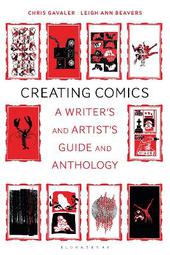
|
Creating Comics: A Writer's and Artist's Guide and Anthology
Paperback / softback
Main Details
Description
For creative writers and artists, comics provide unique opportunities for expression - but unique challenges, too. Creating Comics brings together in one volume an authoritative guide to the creative process, with practical drawing exercises throughout and an anthology of comics demonstrating the eclectic possibilities of the form. Creating Comic covers: * Using images to conceive and develop characters and stories * The complete range of possible relationships between two images * The step-by-step structure of visual narratives * How to approach each page like a unique canvas * Combining words and images to create new meanings Fully integrated with the main guide, the anthology section includes work by creators including: Lynda Barry, Alison Bechdel, Jaime Hernandez, Marjane Satrapi, Adrian Tomine, and many others.
Author Biography
Chris Gavaler is Assistant Professor of English at W&L University, USA. He is also the author of On the Origin of Superheroes (2015), Superhero Comics (2017), Superhero Thought Experiments (2019, with Nathaniel Goldberg), Revising Fiction, Fact, and Faith: A Philosophical Account (2020, with Goldberg), and The Comics Form (forthcoming). Leigh Ann Beavers is a visual artist whose work combines reconciliation ecology with multi-media drawing installation. She holds a BFA in Printmaking from Virginia Commonwealth University, an MFA in Graphics from the University of Wisconsin at Madison and teaches drawing and printmaking at W&L University.
ReviewsSome comics-making texts are aimed at writers who are sure they can't draw, and a few are aimed at artists who are sure they can't craft a narrative from beginning to end. This is the first textbook on creating comics that not only gives writing and art equal weight, but demonstrates that they are inextricable from each other during the creation process. At a moment when comics-making curricula are enjoying a big surge in popularity, a diversity of how-tos (and why-tos) will allow students a necessary diversity of ways into making the better comics they want to see in the world. The brilliant anthology section would be a whole education in itself. The fact that the anthology works are cited and contextualized along different axes throughout the book makes this volume truly indispensable for any scholar of graphic narrative's potential. -- Miriam Libicki, Real Gone Girl Studios, Canada
|